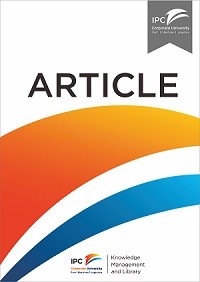Article
Competition for transhipment containers by major ports in Southeast Asia: slot capacity analysis
Container ports in Southeast Asia accounted for an estimated 30.0% of the world’s transhipment traffic in 2004. The share of the region’s transhipment trade was forecasted to increase to 32.5% in 2015. The potential offered by this large and expanding market encouraged major container terminal operators located in Port Klang, Singapore and Tanjung Pelepas to compete intensively for this business by attracting major container shipping lines that operated along key east–west sailing routes to hub at their terminals. This paper analyses the annual slot capacity connected to the three selected ports that was deployed by all the container shipping lines in 1999–2004. The data are computed and categorized based on shipping trade routes. The study aims to shed light on port competition in Southeast Asia for transhipment containers by an in-depth and quantitative analysis. The analysis finds that competition from Port Klang and Tanjung Pelepas had a negative impact on Singapore’s transhipment performance. Although Singapore continued to enjoy a dominant position as the premier transhipment hub in the region in terms of market share by both transhipment throughput and annualized slot capacity, the evidence suggested that its hold on the market appeared to be slipping, albeit gradually. Overall, Tanjung Pelepas is expected to pose the strongest challenge to Singapore’s transhipment hub ambitions. Managerial implications for the ports are drawn.
Ketersediaan
Informasi Detail
- Judul Seri
-
Maritime Policy & Management: The flagship journal of international shipping and port research
- No. Panggil
-
ATC LO LAM c
- Penerbit
- Singapore : routledge taylor france group., 2008
- Deskripsi Fisik
-
15 p.
- Bahasa
-
English
- ISBN/ISSN
-
1464–5254
- Klasifikasi
-
LO
- Tipe Isi
-
-
- Tipe Media
-
-
- Tipe Pembawa
-
online resource
- Edisi
-
VOL. 35, NO. 1, 89–101
- Subjek
- Info Detail Spesifik
-
-
- Pernyataan Tanggungjawab
-
Jasmine Siu Lee Lam
Versi lain/terkait
Lampiran Berkas
Komentar
Anda harus masuk sebelum memberikan komentar

 Karya Umum
Karya Umum  Filsafat
Filsafat  Agama
Agama  Ilmu-ilmu Sosial
Ilmu-ilmu Sosial  Bahasa
Bahasa  Ilmu-ilmu Murni
Ilmu-ilmu Murni  Ilmu-ilmu Terapan
Ilmu-ilmu Terapan  Kesenian, Hiburan, dan Olahraga
Kesenian, Hiburan, dan Olahraga  Kesusastraan
Kesusastraan  Geografi dan Sejarah
Geografi dan Sejarah